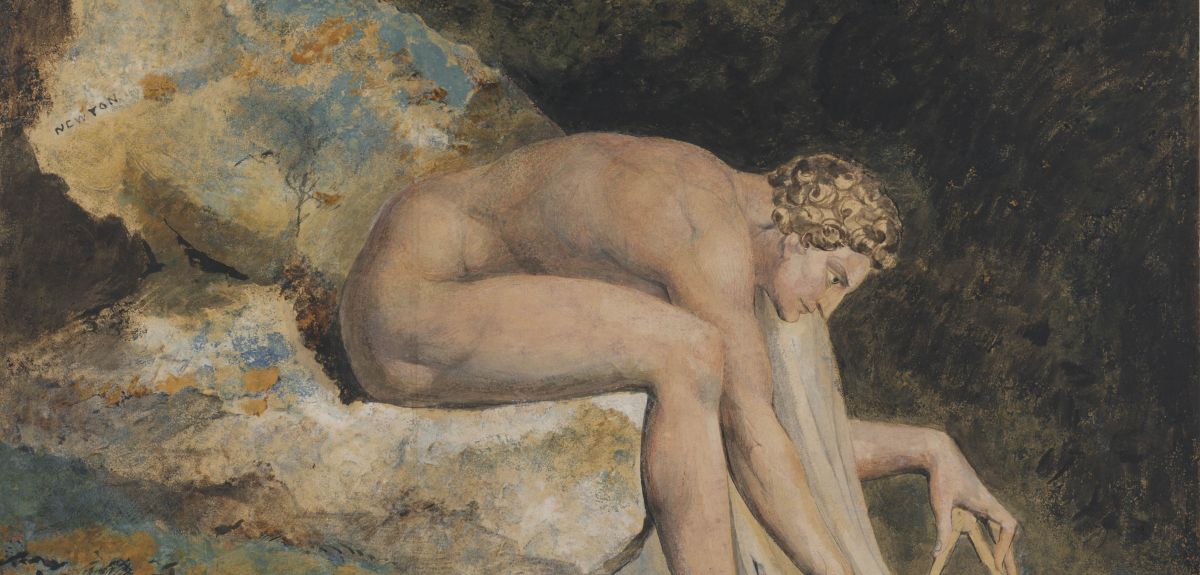
From radical engraver to canonical poet: how did William Blake's reputation change?
A major exhibition on the 18th century poet and artist William Blake opens at the Ashmolean Museum today, featuring his illuminated books and manuscripts as well as a recreation of his studio.
Blake had little formal education and was isolated from the literary circles of his day. But today he is regarded as one of the major poets of his time: the famous opening line 'Tyger, Tyger, burning bright' is known to schoolchildren across the English-speaking world. Arts Blog explores how his reputation changed.
'Certainly, Blake was better known in his own time as an engraver. That was how he made his living,' said Professor Nicholas Halmi of the English Faculty at Oxford University. 'He wasn't regarded as a 'canonical' poet until after the Second World War.'
Blake was born in 1757 and apprenticed at 15 to a commercial engraver. 'He produced engravings of antiquarian objects - Greek urns and other artefacts - before going to work for a publisher,' said Professor Halmi. 'His poetry was known to a few people, including Wordsworth and Coleridge, although in fact Wordsworth thought he was mad.'
Blake's political and religious views were radical, in some respects even by 21st century standards, and these may have barred him from mainstream popularity, particularly at a time when Britain and France were still at war. 'Blake had a sense of a poet as a visionary or prophetic figure,' said Professor Halmi. 'Someone who had insight into society from the outside, and insight into the spiritual nature of man.
'He was strongly opposed to slavery and 'mental tyranny' - which for him included organised religion. He considered himself a Christian, and Christian themes are apparent in his works, but he hated what he referred to as the 'mind-forged manacles' of the Church. He believed they were not grounded in truth, and in fact kept people from perceiving the truth as he understood it, whereby a spark of divinity was present in all of humanity.'
Blake's unorthodox methods of publication present a more practical reason for the relative obscurity of his work. Although he did publish one conventionally printed book of poems, he moved on to produce small engraved editions of poetry. Approximately ten copies of each work would be printed, then coloured in watercolours by Blake's wife, Catherine. Blake then tried to sell these individually.
'Blake devised a kind of personal mythological system in these works,' said Professor Halmi. 'He drew on Norse and Biblical figures as well as his own private symbolic figures.'
Blake is still an anomalous figure among the "Big Six" male romantic poets, with Byron, Shelley, Wordsworth, Coleridge and Keats making up the remaining five. 'Blake had no formal schooling, nor was he immersed in the classical literary tradition, although he knew the Bible and English poetry very well,' said Professor Halmi. 'He had to work for a living, he had limited contact with literary circles, and he was not publishing his work conventionally.
'What is also unusual is his level of collaboration with his wife. We often think of the poet as a solitary genius, but printing is collaborative work. Blake had very forward-thinking views about men and women, and he and Catherine were together until death. When Blake was on his deathbed, it's said his last wish was to make a drawing of her.'
Blake's work remained a minority interest through the 19th century, but began to attract more attention into the 20th. Professor Halmi said: 'Later critics have either made use of, or resisted, the idea that Blake is a very obscure poet who has to be decoded or interpreted.
'Northrop Frye, a Canadian critic who tried to demystify Blake, believed that the work can be read as a coherent whole, with the engraved works at its centre. His study Fearful Symmetry, published in 1947, was largely responsible for bringing Blake into the canon. He said quite explicitly that we should think not of Blake as mad, but of the times we live in as mad. For Frye, Blake could offer some sanity to the post-war world.'
William Blake: Apprentice and Master opens on Thursday 4th December 2014 and runs until Sunday 1st March 2015.